How to set the time
-
Make sure that the watch is operating.
To carry out the procedure, please make sure that the watch is in working state. -
Pull out the crown when the seconds hand is at the 12 o’clock position. (The seconds hand stops.)
-
Turn the crown counterclockwise (6 o’clock direction) slowly to set the time.
-
Push the crown back into the normal position in accordance with a time signal.
Please wind the mainspring when the watch is not working.
How to wind the mainspring
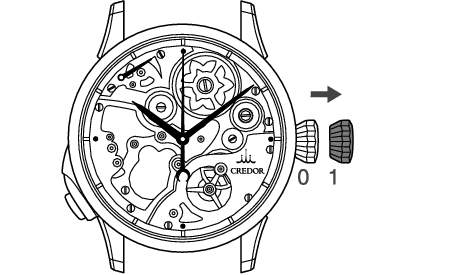
Set the minute hand about ten minutes behind and then slowly advance the minute hand to the desired time.
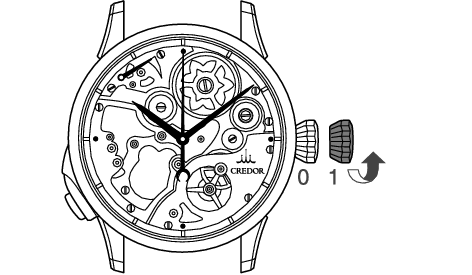
Tips for more accurate time setting
To ensure effective operation of the Spring Drive mechanism, observe the following instructions when you set the time.
-
Before setting the time, make sure to wind the mainspring sufficiently.
-
When starting to use a watch after it stops, wind the mainspring sufficiently. To set the time after that, wait for approximately 30 seconds after the seconds hand starts moving, then pull the crown out to the first click.
-
The seconds hand will stop moving when the crown is pulled out to the first click. Do not stop the movement of the seconds hand for longer than 30 minutes. If the stoppage of the seconds hand movement exceeds 30 minutes, push the crown back in, and wait for approximately 30 seconds after the seconds hand restarts moving, and then set the time.
(Ensure that the power reserve indicator is showing a fully wound state.)
Minute repeater function
The minute repeater function audibly chimes the time with two different sounds, a low-tone gong and a high-tone gong.
The number of times the low-tone gong is struck represents the hour, and the sequence of low-tone and high-tone gongs represents the 10-minute intervals after the last hour, and the number of times the high-tone gong is struck represents the minute.
While most minute repeaters use a sequence of low-tone and high-tone gongs for quarter hours, the minute repeater of this watch has a decimal system, which makes its time announcement easily understood.
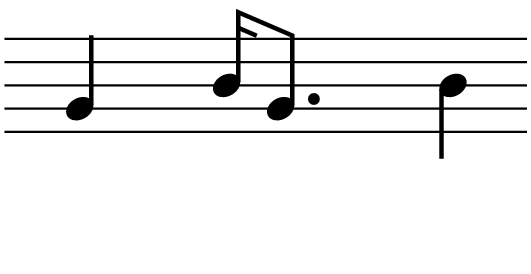
Hour
(a low-tone gong)
10-minute interval
(a sequence of
high-tone and low-tone gongs)
Minute
(a high-tone gong)
At four thirty-five

Please note that the musical notes above are only an image of the gong sounds, and do not represent the actual pitch or intervals of the sound you will hear.
How to use the minute repeater
-
Make sure that the crown is at the normal position.
-
Check the power reserve indicator.
-
Press the button.
If the crown is at the first click position, push it back to the normal position.
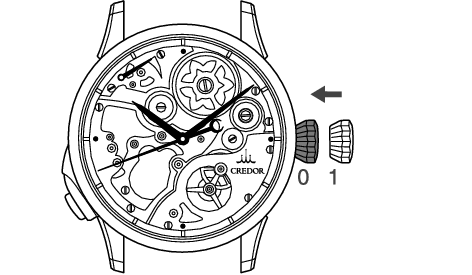
If the mainsprings are in a nearly “unwound” state, rewind
it.
How to wind the mainspring
CAUTION
Each time the minute repeater mechanism is used, a power reserve of
approximately 3 to 5 hours is consumed.
To prevent the minute
repeater from being stopped in the middle of operation, it is
recommended that the mainsprings be sufficiently wound before the minute
repeater is activated.
The minute repeater audibly chimes the currently indicated time by the hour and minute hands.
As the minute repeater is a mechanically-actuated time announcing device, an error of approximately one minute may occur between the time indicated by the number of times the gongs are struck and the time indicated by the hands of the watch.
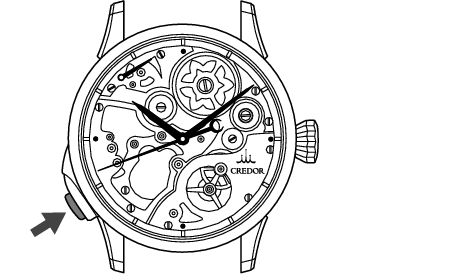
Structure of minute repeater
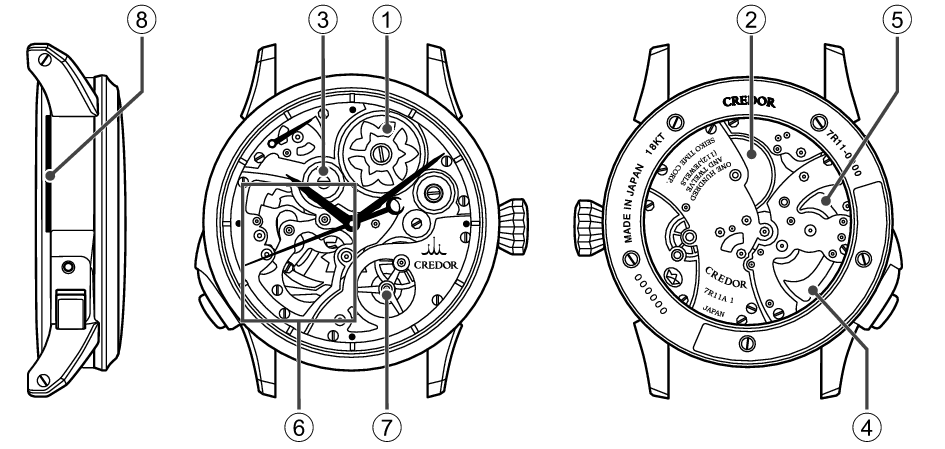
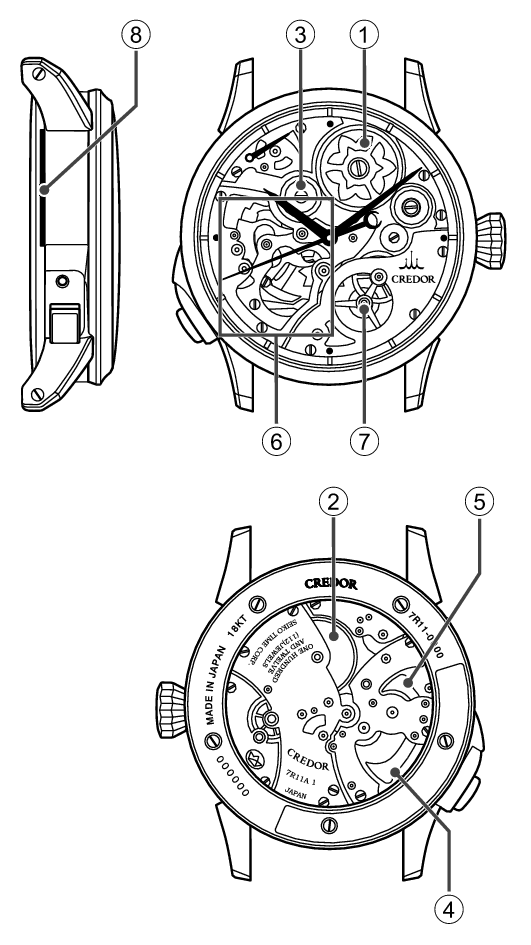
-
First mainspring
-
Second mainspring
-
One-way clutch
-
Large hammer
-
Small hammer
-
Repeating rack
-
Slow governor
-
Sound output hole
The first mainspring is mounted on the front side and the second mainspring is mounted on the rear side of the watch.
These mainsprings are the power source for the watch and minute repeater.
The one-way clutch transmits and interrupts the power generated by the mainsprings to the minute repeater.
The one-way clutch slips when the mainsprings are wound and is locked when the minute repeater mechanism is activated. When winding the mainsprings, you can view the movement of two small springs and the slipping one-way clutch.
The large hammer strikes the gong for a low-tone sound (sound source).
The small hammer strikes the gong for a high-tone sound (sound source).
This is a mechanism for reading the number of times the gongs are struck.
Three
repeating racks for the hour, 10-minute intervals after the last hour, and minute
operate in conjunction with each other.
When the button is pressed to activate the minute repeater, the repeating racks
instantaneously rotate and slowly return to the original position.
The number of
times the gongs are struck is determined by the returning amount.
The slow governor controls the speed at which the mainsprings are unwound and regulates the chime intervals.
When the button located at the 8 o’clock position is pressed, the slow governor rotates at a high speed, and stops after chiming is finished.
It uses the viscosity of air to minimize the operating sound.
This is a slit for releasing the sound, in which the gongs (sound source) are mounted.
Safety device of minute repeater mechanism
Failure of the minute repeater most frequently occurs due to operation of the crown when the repeater mechanism operates.
In most watches which are mounted with a repeater function, when the crown is pulled out to adjust the hand position while the minute repeater is chiming, an abnormal load is applied to the gears or lever to cause a failure.
In order to prevent a failure from occurring because of the time setting while the minute repeater is chiming, this watch is provided with a safety device that prevents both operations from being performed at the same time.
The minute repeater cannot be activated while the time is being adjusted.
The button located at the 8 o’clock position cannot be pressed in the state where the crown is pulled out to the first click position.
Please keep in mind that if the button is forcibly pressed when the crown is pulled out to the first click position, this may result in a failure.
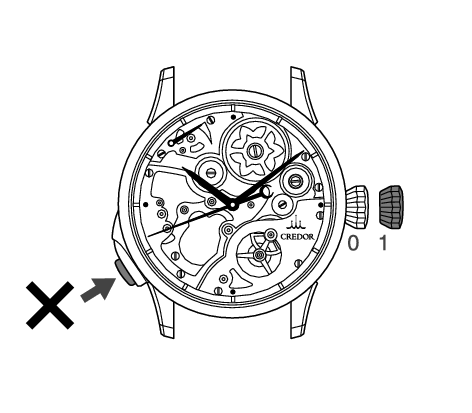
When the crown is pulled out to the first click position
Cannot be pushed in
The following operations cannot be performed while the minute repeater is chiming.
Setting the time
(The crown cannot be pulled out.)
Winding the mainsprings
(The mainsprings slip even if the crown is
turned.)
The minute repeater mechanism operates for a few seconds even after chiming is finished. Please make sure that operation of the minute repeater mechanism is finished by checking that the slow governor is stopped.
Please keep in mind that if the crown is forcibly pulled out while the minute repeater is chiming, this may result in a failure.
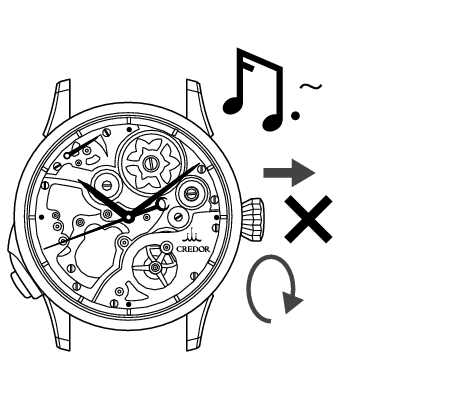
While chiming
Cannot be pulled out
Slips
When operation is not allowed (How to release the safety device)
If the minute repeater is activated when the power reserve is in an “unwound” state How to read the power reserve indicator, the following phenomena may occur.
The mainsprings cannot be wound
The crown cannot be pulled out
The minute repeater cannot be operated
As these phenomena are not due to a failure, please carry out the following operations to release the safety device.
How to release the safety device
-
Press the flush head button.
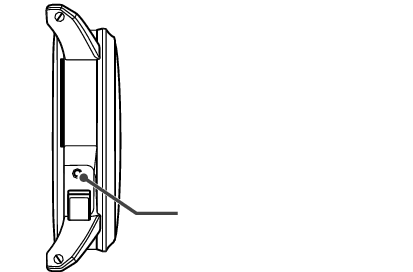
Flush head button
CAUTION
Use an object such as a wooden edge which is less likely to damage the case.
-
Wind the mainsprings to a“ fully wound” state.
-
Press the button located at the 8 o’clock position to activate the minute repeater.
-
Check the number of times the gongs are struck.
-
Reset the time.
Although the watch may chime while the mainsprings are being wound, continue to wind it as is.
How to use the minute repeater
It is normal if the time indicated by the number of times the gongs are struck is the same as the time indicated by the hands of the watch.